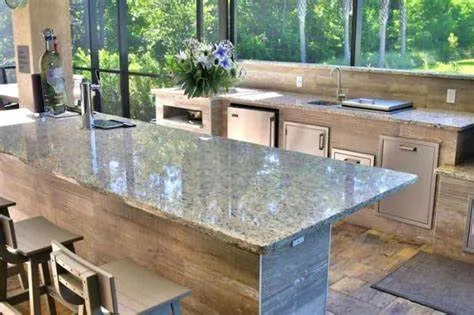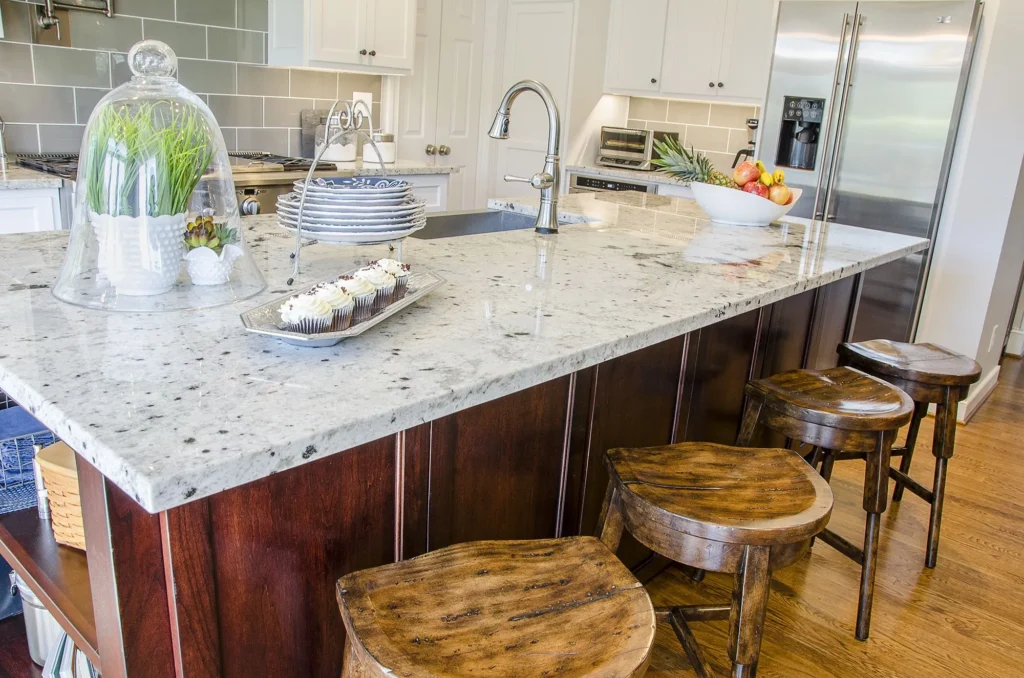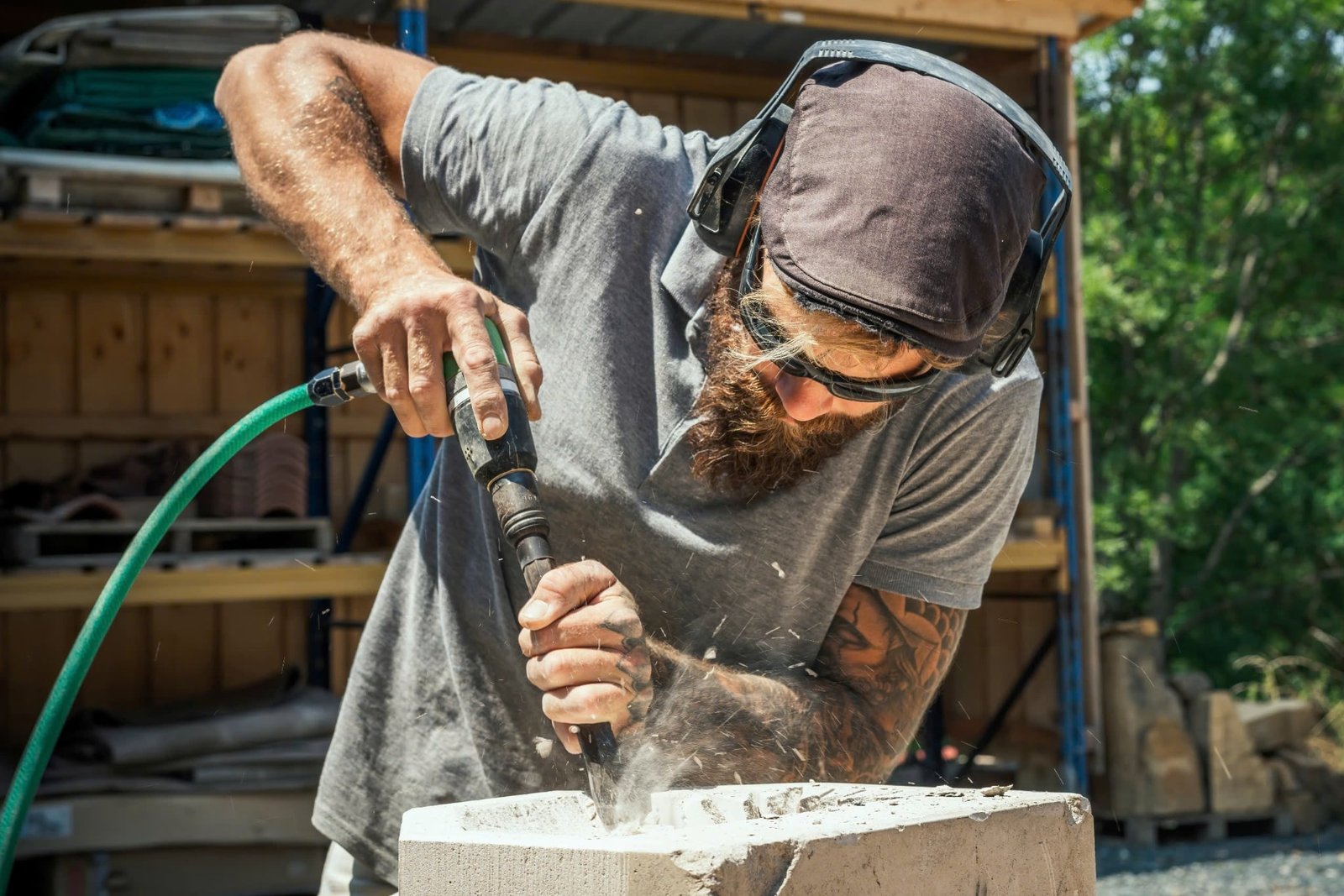
When it comes to choosing the perfect granite countertop, thickness isn’t just a design detail—it’s a crucial decision that impacts strength, appearance, installation, and cost. Whether you’re planning a sleek modern kitchen or a rustic culinary haven, understanding the right granite thickness is essential. In this guide, we’ll explore the standard thickness of granite countertops,
When it comes to choosing the perfect granite countertop, thickness isn’t just a design detail—it’s a crucial decision that impacts strength, appearance, installation, and cost. Whether you’re planning a sleek modern kitchen or a rustic culinary haven, understanding the right granite thickness is essential.
In this guide, we’ll explore the standard thickness of granite countertops, compare different slab sizes, and help you decide which is right for your space and budget.

📏 What Is the Standard Thickness for Granite Countertops?
The standard thicknesses for granite countertops are:
- 2 cm (3/4 inch)
- 3 cm (1 1/4 inch)
These measurements refer to the raw slab thickness before any installation support, edging, or underlayment. Of the two, the 3 cm granite slab has become the most popular choice in modern kitchens and bathrooms due to its strength and luxurious appearance.
👉 What Is a Granite Countertop?

🔍 Why Thickness Matters for Granite Countertops
The thickness of a granite countertop impacts several key factors:
| Feature | 2 cm Thickness | 3 cm Thickness |
|---|---|---|
| Strength | Weaker, needs plywood support | Stronger, no support needed |
| Durability | Susceptible to cracking under stress | More resistant to wear and damage |
| Aesthetics | Slimmer profile | Bold, premium look |
| Installation | Requires more labor | Easier and faster to install |
| Cost | Lower material cost | Higher material, but lower labor cost |
📌 Related: How Long Does It Take to Install Granite Countertops?
🧱 Comparing Granite Slab Thickness Options
1. 2 cm Granite Countertops
- Typically used in bathroom vanities or areas where heavy use is not expected.
- Requires a plywood substrate during installation.
- Easier to cut and fabricate.
- Ideal for budget-conscious homeowners.
⚠️ May not be suitable for long spans or overhangs without additional reinforcement.
2. 3 cm Granite Countertops
- The industry-preferred choice for kitchen countertops.
- No need for underlayment—installs directly on the cabinet.
- Offers more resistance to chipping, cracking, and stress.
- Visually striking with a solid, luxurious edge.
💡 Related Reading: How Long Does It Take to Install Granite Countertop?
🧰 Countertop Installation and Thickness
During countertop installation, the thickness of your granite slab will influence labor costs and prep work. Thinner granite requires additional bracing, which adds time and complexity.
Meanwhile, 3 cm slabs reduce installation steps, which can offset the slightly higher cost per square foot. Installers typically prefer thicker slabs for easier handling and faster installation.
🎨 Granite Countertop Design and Edge Styles
Edge profiles play a huge role in your granite countertop design, and slab thickness determines which styles are possible.
- 2 cm granite works best with simpler, rounded edges like the half bullnose or eased edge.
- 3 cm granite allows for more dramatic profiles such as ogee, beveled, or double bullnose—perfect for a custom, high-end look.
💰 Granite Countertop Prices by Thickness
Pricing varies by region and supplier, but here’s a general estimate:
| Thickness | Cost per Sq. Ft. Installed |
|---|---|
| 2 cm | $40 – $70 |
| 3 cm | $50 – $100 |
While 3 cm granite has a higher material cost, it may save you money on labor and substrate requirements.
🧼 Granite Countertop Maintenance by Thickness
Regardless of thickness, granite is a porous natural stone and must be sealed properly. However, thicker granite is:
- Less prone to stress cracks
- Easier to polish and maintain
- More resistant to impact damage
📚 Related: How to Make a Marble Slab?
🛠️ What’s the Best Thickness for You?
Here’s how to decide:
- Choose 2 cm granite if:
- You’re remodeling on a tight budget
- You’re installing in a low-traffic area
- You like a minimalist design
- Choose 3 cm granite if:
- You want premium aesthetics and long-term durability
- You’re installing in a kitchen or high-use space
- You want more edge design options
🪵 Do You Need Plywood Under Granite Countertops?
Yes, but only if you choose 2 cm thick granite. A plywood sub-deck supports the slab and prevents cracking. This adds material and labor costs and can complicate sink and appliance cutouts.
In contrast, 3 cm granite countertops are self-supporting and do not need a plywood base—saving time and offering a sleeker finish.
🔄 Can You Mix Thicknesses in One Home?
Absolutely. It’s common to install 3 cm granite in kitchens and 2 cm in bathrooms or vertical wall applications. This lets you optimize strength where needed while saving money elsewhere.
🌍 Regional Preferences in Granite Thickness
In the United States, 3 cm granite is standard for kitchens. In Europe, 2 cm granite is more common due to design trends and cabinet styles. Always consult your fabricator based on local availability.
📌 Final Thoughts: Thickness is More Than Just a Number
Choosing the right granite countertop thickness is a balance between budget, design goals, and functional needs. For most homeowners, 3 cm granite offers the best value in terms of durability, aesthetics, and ease of installation.

